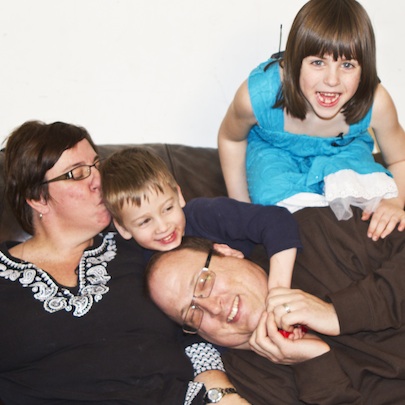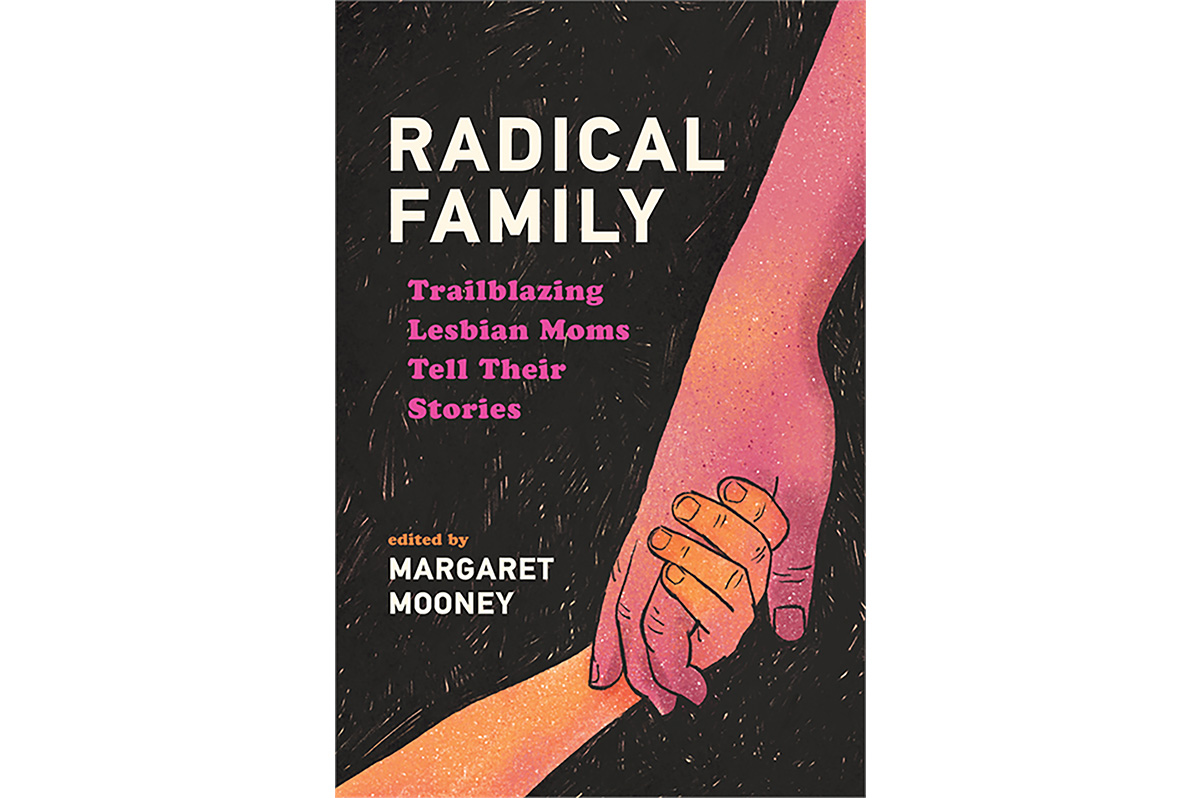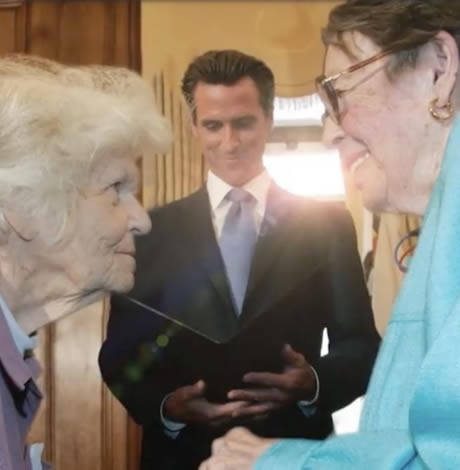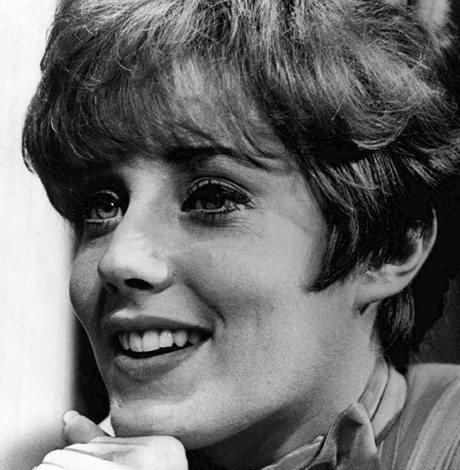Arts & Entertainment
‘In the Life’ celebrates 20 years
Groundbreaking TV series receives $1 million gift to mark anniversary


Maria and Brian Singer of Laurel, Md., and their children Lucas and Jackie, one of the families featured in ‘Becoming Me.’ (Photo courtesy of Brian and Maria Singer.)
The groundbreaking television series “In the Life” received an impressive gift for its 20th anniversary celebration — a $1 million donation from board co-chair and New York philanthropist Henry van Ameringen. This timely award gives the organization a chance to celebrate its milestone while planning for the next 20 years.
The media-shy Ameringen writes movingly about the importance of “In the Life” in a blog entry for the Huffington Post. The 82-year-old activist remembers growing up in a time when “the absence of images reflecting real gay life made it easy for people to assume we were everything bad that was said about us.” This was exacerbated when the AIDS epidemic struck the gay community in the 1980s and Ameringen, like many other LGBT activists, became politicized.
“Staying on the sidelines was impossible,” he writes. “The government was doing absolutely nothing to halt the spread of this disease nor help those who were suffering. AIDS was seen as a ‘gay disease,’ and with so few positive portrayals of gays in the media, and far fewer gay people being out at the time, most Americans believed all the stereotypes they had heard about us.”
However, the premiere of “In the Life” in 1992 contributed to the change in the media and political landscape. Ameringen notes, “The simple fact that there was a television program, airing on public television stations around the country, that represented LGBT people in such a genuine and accurate manner was stunning.” Veteran media expert and activist Cathy Renna says, “‘In the Life’ has become the ‘60 Minutes’ of LGBT journalism” and credits the show for creating a large and diverse audience for LGBT stories.
Michelle Kristel, executive director of In the Life Media, says that quality and content have been the key to the program’s longevity.
“In the early days,” she says, “we led from a place of novelty and uniqueness. When we were first broadcast in 1992, you just didn’t have out, proud gay and lesbian people on television. We were pioneers. But what has sustained us is the quality of our content and the fact that we are telling stories about real people and the critical issues facing our community.”

Philanthropist Henry van Ameringen gave $1 million to ‘In the Life,’ which has been described as the ’60 Minutes’ of LGBT news. (Photo courtesy Renna Communications)
The celebration of the show’s anniversary is already underway. The 20th season kicked off with a red carpet gala and an October 2011 episode that looked back at the history of the show. Kristel explains that “In the Life” began as a variety show hosted by lesbian comedian Kate Clinton, but that over time it evolved into a behind-the-desk news show with in-the-field reporting before assuming the short-form documentary format it has today. Over time, the award-winning show has also developed a robust online presence with web exclusives that supplement its television programming.
Kristel says the staff had a blast putting together the retrospective show. “It’s always fun for us to look at the old tapes. We had a lot of fun putting it together and taking in the depth and breadth of all that we’ve done over the years.” The anniversary celebration will culminate in the annual June Pride Brunch where supporters can “eat, drink and be merry” while watching New York’s Pride Parade from the windows of “In the Life’s” studios on Fifth Avenue in Manhattan.
When asked about the importance of the show, Kristel points out that the impact of the series goes beyond its television and online audiences. For example, this month’s episode, “Becoming Me,” which chronicles the lives of families dealing with transgender and non-gender-conforming children, is already becoming a resource for educators, parenting groups like PFLAG and social service agencies. Kristel says, “The show is a beautiful articulation of what we do really well, which is to take an issue and tell personal stories that relate to the issue and that make it tangible for our audiences. We worked on this piece for nine months and we were able to go in-depth with the eight families we interviewed and really understand their journeys.”
Kristel also cites the impact of the show on legislators and policy-makers. The two-part episode on HIV criminalization educated viewers about a little-known fact. “Very few people,” Kristel points out, “realize that in many places you can go to prison for attempted murder for having consensual sex if you are HIV-positive.” The first part of the episode, “Legalizing Stigma,” which aired in December 2010, was shown at the first-ever congressional hearing on HIV stigmatization and led to the introduction of legislation to rescind those laws. The second part, “Perpetuating Stigma,” which aired in February 2011, was shown at this year’s United Nations AIDS conference in Oslo and was referenced as a resource in the Oslo Declaration.
In addition, the celebrated web exclusive “Injustice at Every Turn” brought to life a report on transgender discrimination that was produced by the National Center for Transgender Equality and the National Gay and Lesbian Task Force. “The report was devastating,” Kristel said. “I read the report and I thought ‘people need to know about the profound levels of discrimination that transgender people are facing.’ But the fact of the matter is that very few people are going to read a report like that, so we produced a video that put a human face on these issues. That video was presented at the U.S. Department of Labor as a way of informing the department about discrimination in the workplace. This is one of the things we do well, to take an issue and put a human face on it and use it to move people to have a better understanding of the lives that people are living and the ways that people are impacted by social injustice and discrimination.”
Kristel is quick to point out that “In the Life” also produces some fun stories as well. A recent episode profiled the late Sam Steward, a sexual renegade, writer and pornographer. With a hearty chuckle, Kristel relates that “he started life as an English professor, but found that the life of an academic didn’t suit him particularly well. He left that to become a writer of erotica and a tattoo artist. Along the way, he documented, in some detail, his sexual escapades. He had a wooden card catalog that he called “The Stud File” with little cards and descriptions of everybody that he ever had sex with and with pertinent details about their physiques and their skills.”
Ameringen’s gift comes at a critical time for In the Life Media, allowing the organization to continue to deliver stories that document the lives of LGBT people and to explore the issues that affect them. About $100,000 of the donation will be used to match new and increased contributions. The balance will offer the organization a valuable opportunity to invest in its future.
Kristel says, “The media landscape has changed radically since we were first broadcast, not only in the way media is produced, but also the way that people consume media. What has remained constant is the power of media to shape the national dialogue. So we will be using this gift to make an assessment of the organization. We will be investing in digital initiatives that will allow us to not only improve our tools for engagement with our viewers but to give our viewers the tools to help us advance equality for LGBT people.”
“In the Life” airs locally on WETA and WMPB and programs can be seen at itlmedia.org/.
Books
A history of lesbian workarounds to build family
Fighting for the right to have and raise kids

‘Radical Family: Trailblazing Lesbian Moms Tell Their Stories’
Edited by Margaret Mooney
c.2025, Wisconsin Historical Society Press
$20/150 pages
You don’t have a white picket fence with an adorable gate.
The other parts of the American Dream – the house in the suburbs, a minivan, and a big backyard – may also be beyond your reach. You’ve never wanted the joyous husband-wife union, but the two-point-five kids? Yeah, maybe that’s possible. As in the new book “Radical Family,” edited by Margaret Mooney, it’s surely more so than it was in the past.

Once upon a time, if a lesbian wanted to raise a family, she had two basic options: pregnancy or adoption. That is, says Mooney, if she was willing to buck a hetero-centric society that said the former was “selfish, unnatural and radical” and the latter was often just simply not possible or even legal.
Undaunted, and very much wanting kids, many lesbians ignored the rules. They built “chains” of women who handed off sperm from donor to doctor to potential mother. They demanded that fertility clinics allow single women as customers. They wrote pamphlets and publications aimed to help others become pregnant by themselves or with partners. They carefully sought lesbian-friendly obstetricians and nurses.
Over time, lesbians who wanted kids were “emboldened by the feminist movement and the gay and lesbian rights movement” and did what they had to do, omitted facts when needed, traveled abroad when they could, and found workarounds to build a family.
This book tells nine stories of everyday lesbians who succeeded.
Denise Matyka and Margaret McMurray went to Russia to adopt. Martha Dixon Popp and Alix Olson raised their family, in part and for awhile in conjunction with Popp’s husband. Gail Hirn learned from an agriculture publication how to inseminate herself. MC Reisdorf literally stood on her head to get pregnant. Mooney says that, like most lesbian parents then, she became a mother “without any safety nets…”
Such “struggles likely will feel familiar as you read about [the] desire to become parents…” says Mooney. “In short, these families are ordinary and extraordinary all at once.”
In her introduction, editor Margaret Mooney points out that the stories in this book generally take place in the latter part of the last century, but that their relevance is in the struggles that could happen tomorrow. There’s urgency in those words, absolutely, and they’re tinged with fear, but don’t let them keep you from “Radical Family.”
What you’ll see inside these nine tales is mostly happy, mostly triumphant – and mostly Wisconsin-centric, though the variety in dream-fulfillment is wide enough that the book is appropriate anywhere. The determination leaps out of the pages here, and the storytellers don’t hide their struggles, not with former partners, bureaucracy, or with roadblocks. Reading this book is like attending a conference and hearing attendees tell their tales. Bonus: photos and advice for any lesbian thinking of parenthood, single or partnered.
If you’re in search of positive stories from lesbian mothers and the wall-busting they did, or if you’ve lived the same tales, this slim book is a joy to read. For you, “Radical Family” may open some gates.
The Blade may receive commissions from qualifying purchases made via this post.
Theater
Astounding ‘LIZZIE’ builds on legendary axe murder tale
Rock musical twist addresses abuse, oppression, queer identity

‘LIZZIE’
Through Nov. 30
Keegan Theatre
1742 Church St., N.W.
$54-$65
Keegantheatre.com
Lizzie Borden put Fall River, Mass., on the map. When the 32-year-old, seemingly respectable woman was charged with the axe murder of her father Andrew and stepmother Abby in the summer of 1892, it sent shock waves across the community and far beyond.
In time, the gruesome tale would weave its way into the annals of American crime lore, always remembered through that popular nursery rhyme “Lizzie Borden took an axe, gave her father 40 whacks…” Well, you know the rest.
The astoundingly terrific “LIZZIE” (now playing at Keegan Theatre, a short walk from Dupont Circle Metro) builds on the legend. The rock musical with book by Tim Maner, music by Steven Cheslik-deMeyer and Alan Stevens Hewitt, and lyrics by Cheslik-deMeyer and Maner, follows the days leading up to the grisly murders (unseen offstage) through Lizzie’s acquittal, bringing to the fore matters of abuse, oppression, and queer identity.
Shrewdly staged and choreographed by Jennifer J. Hopkins, the show begins with a haunting version of “Forty Whacks (Prologue),” featuring the talented cast of four women who can sing, act, move, and deliver the occasional laugh-out-loud line.
Clearly, frustrated Lizzie (powerfully played by Caroline Graham) and dominant older sister Emma (Sydne Lyon), both unmarried and still at home, are angsty and deeply unhappy. They resent their father for a litany of reasons including his extreme Yankee frugality. While one of the richest men in Fall River, he chooses to live on a sad street and go without indoor plumbing rather than set up housekeeping in posh digs across town. But it’s when they see Andrew’s great fortune slipping away to their stepmother that their fury reaches new heights.
Much of “LIZZIE” takes place at the scene of the crime, the Borden residence – cleverly suggested by scenic designer Josh Sticklin with some clapboard siding, stairways, a bit of period wallpaper and a purposely incongruous, large Borden family coat of arms.
Lighting designer Sage Green, convincingly and evocatively, summons at turns a bona fide rock concert experience, dimly lit parlor, or an intimate setting in a small yard.
And costume designer Logan Benson savvily adds to the atmosphere. Lizzie’s somber dresses with their accurate to the era leg-of-mutton sleeves give way to something altogether glitzier and more revealing after the murders.
There is dialogue, but the Riot Grrrl-inspired work is mostly sung through with punk rock anthems, ballads, and character driven songs. Whether spoken or sung, “LIZZIE” makes no bones about the title character’s guilt while introducing varying levels of collusion among the other women.
A knowing wry smirk from the house maid Bridget (Brigid Wallace Harper) says a lot about the family dynamic (“there’s a lock on every door / In every room a prisoner of a long, silent war”) as well as what went down that summer morning at the Borden house.
Lizzie’s secret girlfriend Alice (golden throated Savannah Blackwell) who conveniently lives next door, is besotted and watches her every move. Just after the murders, she saw Lizzie burn a dress in the yard.
The hard driving score is played by a passionate half-dozen strong band led by Marika Countouris. Sometimes, the instruments overpower the amplified singers and a lyric or two is lost, but that’s not so unusual with rock musicals.
At 90 minutes with a leisurely intermission (well-earned by the band and cast, especially Graham as Lizzie who’s onstage throughout, often incorporating frenetic movement and strenuous air guitar into her many songs), the first half explores feelings of entrapment and the second liberation.
Lizzie goes to trial. Despite a shaky alibi, the defendant seems to be winning over the jury. Looks like she might get that grand house on the hill after all.
The Borden story has been shared in varied ways including innumerable books and documentaries, Jack Beeson’s opera “Lizzie Borden” (1965), Agnes de Mille’s ballet “Fall River Legend” (1954), and the memorable 1975 TV movie starring Elizabeth Montgomery (best known as the perky reluctant witch Samantha Stevens on TV’s sitcom “Bewitched”) playing against type.
Today, the legend endures with “LIZZIE” at Keegan.
Movies
Superb direction, performances create a ‘Day’ to remember
A rich cinematic tapestry with deep observations about art, life, friendship

According to writer/director Ira Sachs, “Peter Hujar’s Day” is “a film about what it is to be an artist among artists in a city where no one was making any money.” At least, that’s what Sachs – an Indie filmmaker who has been exploring his identities as both a gay and Jewish man onscreen since his 1997 debut effort, “The Delta” – told IndieWire, with tongue no doubt firmly planted in cheek, in an interview last year.
Certainly, money is a concern in his latest effort – which re-enacts a 1974 interview between photographer Peter Hujar (Ben Whishaw) and writer Linda Rosenkrantz (Rebecca Hall), as part of an intended book documenting artists over a single 24-hour period in their lives – and is much on the mind of its titular character as he dutifully (and with meticulous detail) recounts the events of his previous day during the course of the movie. To say it is the whole point, though, is clearly an overstatement. Indeed, hearing discussions today of prices from 1974 – when the notion of paying more than $7 for Chinese takeout in New York City seemed outrageous – might almost be described as little more than comic relief.
Adapted from a real-life interview with Hujar, which Rosenkrantz published as a stand-alone piece in 2021 (her intended book had been abandoned) after a transcript was discovered in the late photographer’s archives, “Peter Hujar’s Day” inevitably delivers insights on its subject – a deeply influential figure in New York culture of the seventies and eighties, who would go on to document the scourge of AIDS until he died from it himself, in 1987. There’s no plot, really, except for the recalled narrative itself, which involves an early meeting with a French journalist (who is picking up Hujar’s images of model Lauren Hutton), an afternoon photo shoot with iconic queer “Beat Generation” poet/activist Allen Ginsburg, and an evening of mundane social interaction over the aforementioned Chinese food. Yet it’s through this formalized structure – the agreed-upon relation of a sequence of events, with the thoughts, observations, and reflections that come with them – that the true substance shines through.
In relaying his narrative, Hujar exhibits the kind of uncompromising – and slavishly precise – devotion to detail that also informed his work as a photographer; a mundane chronology of events reveals a universe of thought, perception, and philosophy of which most of us might be unaware while they were happening. Yet he and Rosenkrantz (at least in Sachs’ reconstruction of their conversation) are both artists who are keenly aware of such things; after all, it’s this glimpse of an “inner life,” of which we are rarely cognizant in the moment, that was/is their stock-in-trade. It’s the stuff we don’t think of while we’re living our lives: the associations, the judgments, the selective importance with which we assign each aspect of our experiences, that later become a window into our souls – if we take the opportunity to look through it. And while the revelations that come may occasionally paint them in a less-than-idealized light (especially Hujar, whose preoccupations with status, reputation, appearances, and yes, money, often emerge as he discusses the encounter with Ginsberg and his other interactions), they never feel like definitive interpretations of character; rather, they’re just fleeting moments among all the others, temporary reflections in the ever-ongoing evolution of a lifetime.
Needless to say, perhaps, “Peter Hujar’s Day” is not the kind of movie that will be a crowd-pleaser for everyone. Like Louis Malle’s equally acclaimed-and-notorious “My Dinner With Andre” from 1981, it’s essentially an action-free narrative comprised entirely of a conversation between two people; nothing really happens, per se, except for what we hear described in Hujar’s description of his day, and even that is more or less devoid of any real dramatic weight. But for those with the taste for such an intellectual exercise, it’s a rich and complex cinematic tapestry that rewards our patience with a trove of deep observations about art, life, and friendship – indeed, while its focus is ostensibly on Hujar’s “day,” the deep and intimate love between he and Rosenkrantz underscores everything that we see, arguably landing with a much deeper resonance than anything that is ever spoken out loud during the course of the film – and never permits our attention to flag for even a moment.
Shooting his movie in a deliberately self-referential style, Sachs weaves the cinematic process of recreating the interview into the recreation itself, bridging mediums and blurring lines of reality to create a filmed meditation that mirrors the inherent artifice of Rosenkrantz’s original concept, yet honors the material’s nearly slavish devotion to the mundane minutiae that makes up daily life, even for artists. This is especially true for both Hujar and Rosenkrantz, whose work hinges so directly to the experience of the moment – in photography, the entire end product is tied to the immediacy of a single, captured fragment of existence, and it is no less so for a writer attempting to create a portrait (of sorts) composed entirely of fleeting words and memories. Such intangibles can often feel remote or even superficial without further reflection, and the fact that Sachs is able to reveal a deeper world beyond that surface speaks volumes to his own abilities as an artist, which he deploys with a sure hand to turn a potentially stagnant 75 minutes of film into something hypnotic.
Of course, he could not accomplish that feat without his actors. Whishaw, who has proven his gifts and versatility in an array of film work including not only “art films” like this one but roles from the voice of Paddington Bear to “Q” in the Daniel Craig-led “James Bond” films, delivers a stunning performance, carrying at least 75% of the film’s dialogue with the same kind of casual, in-the-moment authenticity as one might expect at a dinner party with friends; and though Hall has less speaking to do, she makes up for it in sheer presence, lending a palpable sense of respect, love, and adoration to Rosenkrantz’s relationship with Hujar.
In fact, by the time the final credits role, it’s that relationship that arguably leaves the deepest impression on us; though these two people converse about the “hoi polloi” of New York, dropping legendary names and reminding us with every word of their importance in the interwoven cultural landscape – evoked with the casual air of everyday routine before it becomes cemented as history – of their era, it’s the tangible, intimate friendship they share that sticks with us, and ultimately feels more important than any of the rest of it. For all its trappings of artistic style, form, and retrospective cultural commentary, it’s this simple, deeply human element that seems to matter the most – and that’s why it all works, in the end. None of its insights or observations would land without that simple-but-crucial link to humanity.
Fortunately, its director and stars understand this perfectly, and that’s why “Peter Hujar’s Day” has an appeal that transcends its rarified portrait of time, place, and personality. It recognizes that it’s what can be read between the lines of our lives that matters, and that’s an insight that’s often lost in the whirlwind of our quotidian existence.
-

 District of Columbia3 days ago
District of Columbia3 days ago‘Sandwich guy’ not guilty in assault case
-

 Sports4 days ago
Sports4 days agoGay speedskater racing toward a more inclusive future in sports
-

 New Jersey4 days ago
New Jersey4 days agoBlue wave hits Northeast: Sherrill and Mamdani lead Democratic comeback
-

 District of Columbia5 days ago
District of Columbia5 days agoTrial begins for man charged with throwing sandwich at federal agent














